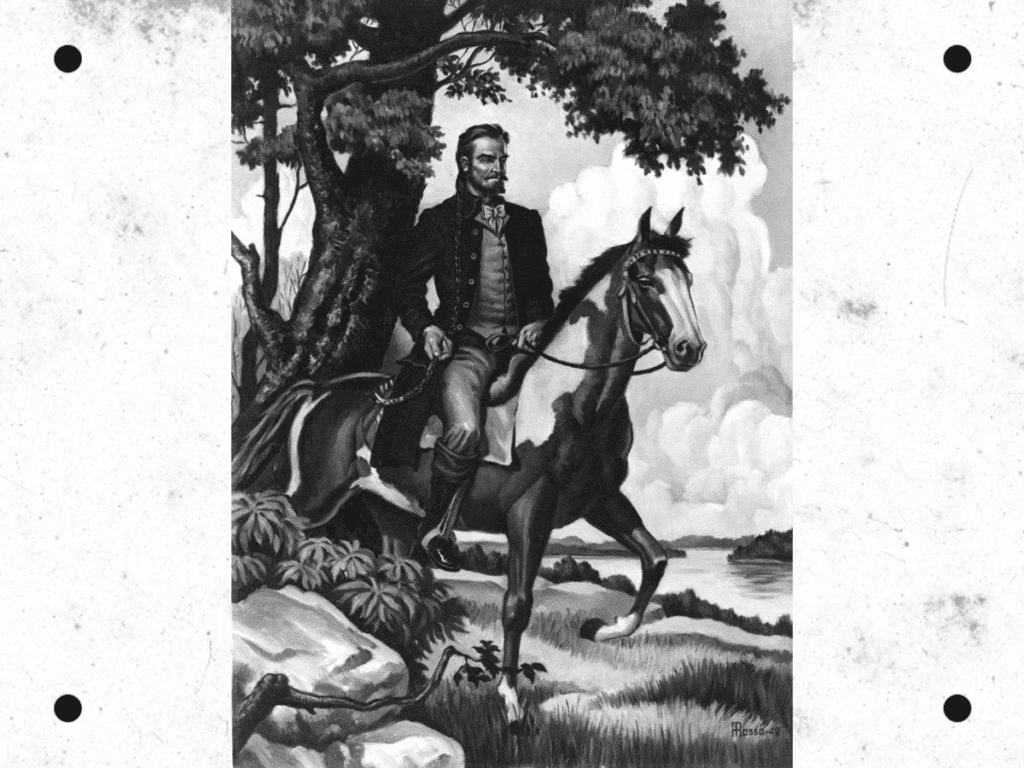Pierre Louis de Lorimier (Americanized as Peter Loramie) was born in 1748 to French commandant Claude Nicolas de Lorimier de la Rivière and an unknown Iroquois woman. He grew up in a family of military background as well as immersed himself into learning about local native customs and languages. After the Treaty of Paris was signed, Lorimier’s family became loyal British subjects.
Upon reaching 21 years of age, Lorimier traveled with his father to this region of the Midwest that would later become Shelby County. Their goal was to establish a trading post with the local Shawnee and Miami Indians in proximity to what was once Pickawillany, an already established gathering place for local natives. Lorimier chose a site along what is now called Loramie Creek, which runs between the Great Miami River and Auglaize River, allowing travel from the Great Lakes region to the Gulf of Mexico. It is believed Lorimier’s father passed away along this route while journeying home to Canada in 1770.
“The Frenchman’s Store” and “Loramie’s Station” were both names given to Lorimier’s pioneer business. He grew his own crops, maintained a herd of cattle and horses, employed both Frenchmen and natives, and managed a portage business along the local waterways. Many of the bodies of water we now identify as creeks and tributaries were wider and deep enough to navigate by canoe and were used as routes of transportation before the construction of the Miami and Erie Canal.
Lorimier was a very diverse man and could speak upwards of 22 Native American dialects. Each of his three wives were of Native descent, the most well-known being Charlotte Pemanpieh Bougainville, daughter of the first French navigator to sail around the world. Pierre Louis de Lorimier’s connections with the Native Americans and his newfound loyalty to the British flag led him to both supply and join raids on newly formed American settlements in what would later become parts of Ohio and Kentucky. His actions incurred the attention of General George Rogers Clark, whose men burned Lorimier’s trading post to the ground in 1782, carrying away 200 horses laden with clothing, pelts, scarlet cloth, Irish linen, silver trinkets, etc. Lorimier sought financial restitution from the British government for the loss of his trading post, which was estimated to be between $20,000 and $70,000 worth of goods – anywhere from $500,000 to $1,500,000 in today’s market. This skirmish is considered one of the last Revolutionary War battles in the Ohio Valley.
A majority of the inhabitants from around the site of Lorimier’s store fled to safety during the attack. Pierre Louis Lorimier and his wife at the time, Charlotte, traveled west toward Indiana and the Mississippi River where they eventually settled in Cape Girardeau, Missouri. Lorimier and his entourage were received well; Missouri was part of Spain’s territory at this time. Louis Lorimer (as he was now called) became Commandant of a post in Cape Girardeau until after the Louisiana purchase, when he changed his allegiance for a final time to the United States of America, becoming a member of the militia and later appointed judge of the Common Pleas Court. He passed away June 26, 1812, after a long bout of tuberculosis and is buried in the Old Lorimer Cemetery in Cape Girardeau, MO.
